Results 5,051 to 5,060 of 12096
Thread: Anandtech News
-
06-01-15, 06:00 PM #5051
Anandtech: AMD Picks Up Jim Anderson from Intel To Lead Computing and Graphics Busine
Word comes from AMD this afternoon that they have finally found a new Senior VP and General Manager for the company’s Computing and Graphics business group. The group has been without a GM since early this year when previous GM John Byrne left the company, with CEO Dr. Lisa Su overseeing the group on an interim basis.
After having conducted an external search, AMD has announced that they have tapped Jim Anderson to take over the group, bringing him over from Intel. Jim had in turn been with Intel for the last 7 months as the GM of the company’s Axxia communication processor business, after Intel acquired the business and Jim from LSI last year. Going farther back, before his tenure at LSI, Jim was employed at Intel as a microprocessor architect and later involved in Intel’s microprocessor strategic planning, giving him a bona fide background in the business he’s now being tapped to lead.
In their press release of the hiring, along with lauding Jim’s technical credentials, AMD has also been making it clear that they are bringing Jim on-board in order to help turn around the state of AMD’s Computing and Graphics business and improve its profitability. As the GM is responsible not only for technical matters but business and sales matters as well, AMD has been in need of someone capable of expertly handling all three aspects of the business, to which AMD believes that Jim’s “proven ability to transform businesses to drive profitable growth” makes him a good fit for the job.
More...
-
06-01-15, 10:44 PM #5052
Anandtech: Antec Reveals the Signature S10 Premium Tower Case
That Antec designed a new case may not really sound like news. After all, cases are the primary focus of the company, which offers dozens of models. However, this particular release is of special interest as the company has overhauled their lineup with a new flagship case, the Signature S10, a unique tower case of massive proportions. Meant to be Antec's engineering pinnacle, the Signature S10 is an aggressive combination of advanced thermal performance, versatility, and elegant aesthetics.
Measuring 60 cm tall and 59 cm deep (23.7" × 23.2"), the Signature S10 is one of the largest tower cases in existence. It also weights about 18 kg, making it a very heavy case that is certainly not designed for frequent movement. Still, the proportions of a case alone are not stimulating and not what is unique about this particular release. What is perhaps the most important point of the Signature S10 is that it features Antec's patented three chamber design internal architecture.
Exactly as the name suggests, the three chamber design architecture splits the interior of the Signature S10 into three compartments. The entire front of the case is reserved for hard disk drives, the bottom compartment is shared between the PSU and five 2.5" device trays, and the primary compartment is reserved for the main system alone. Note that, despite its size, the Signature S10 does not have any 5.25" drive bays, so the idea of an optical drive is truly dead for this case. However, there is a slot for a short 5.25" device (fan controller, card reader, etc.). The chassis is most likely made out of SECC steel and the buyer is given the choice between aluminum and smoked tempered glass doors for the side panels. If Antec's press release is accurate and we are talking about real glass, not Plexiglass, that would be a sight to behold.
As the Signature S10 is intended to be Antec's engineering pinnacle, the stock cooling of the case is intense. The very architecture of the case is supposed to aid thermal performance, forcing top-down airflow. There are seven stock fans, one 120 mm and six 140 mm, preinstalled into the Signature S10, the models and specifications of which are unknown at this point of time. To limit the insertion of dust, Antec installed micromesh air filters to each individual chamber.
Obviously, Antec is trying to combine the very elegant appearance of the Signature series with outstanding thermal performance and expandability options, pitching the case as a good match for advanced gaming systems and workstations. Meanwhile it seems as Antec put every bit of their technology on the Signature S10, and the retail price reflects that, as the MSRP is just shy of $500. Consequently the potential market of the Signature S10 is going to be very small (if not very elite) limited to the most hardcore of enthusiasts who are willing to pay a very hefty price in order to combine elegant aesthetics and quality with thermal performance.
Gallery: Antec Reveals the Signature S10 Premium Tower Case





More...
-
-
06-02-15, 04:45 AM #5054
Anandtech: OCZ Announces Trion 100 TLC SSD & Shows Off an Upcoming NVMe Drive with To
One of the things I've been expecting to see at this year's Computex is more TLC NAND based SSDs. So far only Samsung and SanDisk have been shipping TLC SSDs in high volume, but OCZ will shortly join the club with its Trion 100 SSD series that was showcased on the Computex showfloor. The Trion 100 is based on a totally in-house designed Toshiba "Alishan" controller, whereas some earlier Toshiba controllers have been modified/renamed third party silicons with the company's firmware. We discussed the cooperation between the two companies in more detail in our interview with OCZ's CEO, Ralph Schmitt, but to put it shortly the use of Toshiba IP in an OCZ product is part of the companies' strategy to consolidate product development to maximize resources as it wouldn't be efficient to have both companies working on platforms that ultimately have the same end goal.
The NAND in Trion 100 is Toshiba's A19nm (i.e. second generation 19nm) TLC, although OCZ is planning on switching to the latest 15nm node later this year once the supply is high enough. For error correction the drive uses Toshiba's own QSBC (Quadruple Swing-By Correction) technology, which from what I was told is basically in between traditional BCH and LDPC correction. I don't have too many details of the technology at this point, but I will try to gather more information to better know how the technology stacks up against the competition. Typical to TLC drives, the Trion 100 employs an SLC cache to increase peak performance in smaller capacities and also to boost endurance.

One of the biggest improvements in the Trion 100 is the support for DevSleep and other power saving modes. Because of the silicon design the Barefoot 3 isn't capable of offering low idle power consumption, which has been one of main criticisms for a while now. With the Trion 100 OCZ is finally looking to provide a solution that's also suitable for mobile applications where power draw and battery life are major concerns.
The Trion 100 is now in final validation and the official release will take place later in the summer. Hence performance, endurance and pricing are not final yet, but what I was told is that the performance will be read focused (as most light client workloads are read-centric), endurance goal is 20GB/day and price will be slightly below the ARC 100.

Aside from the Trion 100, OCZ also showed off a new unannounced M.2 NVMe drive that will be released later this year (I'm hearing September-October timeframe) as a new RevoDrive. Unlike the previous designs we have seen, this isn't based on OCZ's own JetExpress controller, but on Toshiba's PCIe 3.0 x4 NVMe controller. The reason OCZ is using Toshiba's controller is cost because the the JetExpress has been designed mainly with enterprise in mind, meaning that it cannot be implemented into a cost effective client drive.
Gallery: OCZ Computex 2015


Obviously OCZ also had it's new Z-Drive 6000 series on display along with the upcoming JetExpress based XD-JX series.
More...
-
06-02-15, 07:01 AM #5055
Anandtech: The Intel Broadwell Desktop Review: Core i7-5775C and Core i5-5765C Tested
On almost all PC technology forums, it is hard to escape users talking about what Intel’s next processor lineup will be. Due to problems in Intel’s 14nm node, Broadwell in both mobile and desktop have been delayed, somewhat substantially in the case of the desktop. So while motherboard manufacturers released their Z97 platform over 6 months ago, we have been waiting for Broadwell to arrive. That day is today, and we can lay the smackdown with some benchmark numbers too.
More...
-
06-02-15, 08:00 AM #5056
Anandtech: Intel Launches Five 47W Laptop Broadwell SKUs
As part of Intel’s batch of announcements today, including Broadwell on the desktop and Thunderbolt 3, the 47W laptop/mini-PC processors that were also launched offers an interesting talking point. These are essentially the drop in models for current high end Haswell laptops, offering manufacturers an upgrade path before Intel’s 6th Generation, Skylake.
The five SKUs are:
The clear odd one out here is the i7-5700HQ, already announced in some laptops, which holds HD 5600 graphics whereas the rest are on Iris Pro 6200 with Crystal Well and have an extra 128 MB of eDRAM that acts as an L4 cache. The i5 is also the lower SKU coming with two cores and four threads, suggesting that this is a disabled die to satisfy yields rather than a native dual core design. Pricing is appropriate, with the i5 also getting only 4MB of L3 cache but a higher base frequency than some of the quad core variants.Intel 47W Broadwell Lineup i7-5950HQ i7-5850HQ i7-5750HQ i7-5700HQ i5-5350H Price $366 $348 $276 $265 $244 Cores 4 4 4 4 2 Threads 8 8 8 8 4 Base CPU Freq. 2.9GHz 2.7GHz 2.5GHz 2.7GHz 3.0GHz Turbo CPU Freq. 3.7GHz 3.6GHz 3.4GHz 3.5GHz 3.5GHz Graphics Iris Pro 6200 (GT3e) Iris Pro 6200 (GT3e) Iris Pro 6200 (GT3e) HD 5600
(GT2)Iris Pro 6200 (GT3e) EUs 48 48 48 24 48 iGPU Freq. 1150MHz 1100MHz 1105MHz 1050MHz 1050MHz TDP 47W 47W47W47W47WDRAM Freq.
(DDR3L / LPDDR3L)1600MHz /
1866MHz1600MHz /1866MHz1600MHz /1866MHz1600MHz /1866MHz1600MHz /1866MHzL3 Cache 6MB 6MB 6MB 6MB 4MB L4 Cache 128MB (Crystal Well) 128MB (Crystal Well) 128MB (Crystal Well) None 128MB (Crystal Well) Interface BGA BGA BGA BGA BGA
We have 47W Broadwell based laptops inbound for review, but the interesting element in this is that Apple recently updated their Macbook Pro line but decided not to wait for the official Broadwell announcement. It is a little unclear why, but the i7-4770HQ and i7-4870HQ variants would match up nicely (with speed bumps) to the i7-5750HQ and i7-5870HQ as they are both listed at the same price.
Source: Intel
More...
-
06-02-15, 08:36 AM #5057
Anandtech: Dell Launches Premium Support Option For Consumers
Today Dell is unveiling a new offering in the world of after purchase support which they have dubbed Premium Support. It promises to significantly reduce the amount of time spent on the phone when there is an issue, and the support can encompass anything from hardware to software. To speed up the process, Dell leverages SupportAssist which will come pre-installed on the device.
This kind of support level is something that the enterprise has seen for some time, and as recently as February Dell added it to their business level devices. Unlike traditional support, where it is a reactive model based upon the customer having an issue and reporting it, Dell’s SupportAssist software monitors the system and, assuming you have an active subscription to the service, sends Dell notifications of issues with the device so that they can reach out to the customer through whatever means the customer prefers, so Dell can call or email letting them know that there is an issue.
One of the key benefits of this approach is that if you do have an issue, the correct person can be the first point of contact rather than having to be bounced around while on hold. Dell commissioned Principled Technologies to simulate a support case using Dell’s Premium Support with SupportAssist against the top-tier support of Apple, HP, and Lenovo, and the call time for Dell support for a broken hard drive was 4m 05s. Apple and Lenovo were about tied at 25m 44s for Apple and 25m 49s for Lenovo, with HP at 40m 40s. That was just the call time though. Apple then made an appointment for the customer to visit the Genius Bar for further troubleshooting, and HP wanted the laptop shipped to them for service or a refund. Dell and Lenovo both shipped out a new drive and an on-site technician for service.
Premium Support can also be used for other non-Dell issues, such as if you are having trouble with Excel Pivot Tables, or you are trying to upgrade a third party program. Dell wants it to be a one-stop shop for all computer support for Dell customers. They even said it could be used to help with migrating a computer over to Windows 10.
SupportAssist is free to all customers to help them with diagnosing their computers, and those that want to move up to the Premium Support model can do that starting at $39 per year. It is currently available in the USA and Canada on Dell Inspiron, Alienware, Venue, and Chromebook products.
Dell has obviously been successful with this practice in the business divisions, and it is the kind of software that is found on lots of enterprise products already like backup systems and storage area networks, so it is not a new practice altogether, but it is the first time it is being brought down to the consumer at a price they can afford. To hit this price point though, Dell is using overseas support rather than the NA support offered to its business customers.
I’m not sure that this would ever be the right product for me, but on a larger scale, there are likely a lot of people that would like this kind of service. The low price helps a lot too. Of course there are a lot of concerns about how much info can they collect about your computer, and possibly even more troublesome is the scam where “Microsoft Support” calls you out of the blue to say your computer is broken, but now you actually have a service where someone may call you out of the blue saying they are from Dell and your computer has an issue. However this model has proven to be successful in the enterprise and business sectors and Dell’s SupportAssist is based off of Compellent’s technology from when Dell acquired them in 2010.
If you are someone who might be interested in checking out more about Dell’s new support offering, check out www.dell.com/premiumsupport
More...
-
06-02-15, 08:36 AM #5058
Anandtech: Connexant Launches New HD Audio CODEC For Mobile
Conexant today announces a new high-end HD audio codec for notebooks, ultrabooks and tablets. The CX8200 features a fully-integrated Class-D smart amplifier with real-time speaker sensing and protection. The chip offers programmable hardware 14-band equalizer and dynamic range compression blocks.
An increasingly required feature for audio codecs is the inclusion of voice wakeup and recognition. All of today's Android devices voice wakeup capabilities are enabled by specialized audio codec ICs such as from Qualcomm or Cirrus Logic (Formerly Wolfson Microelectronics). The CX8200 is able to check this feature-box and satisfies Google requirements for Chromebook integration as well as support for Intel Automatic Speech Recognition.
The codec is able to use a proprietary ‘SoftAware’ link to interconnect amplifier hardware sensors with software algorithms. The dataflow between hardware sensors and software enables dynamic updates to the algorithms performing speaker control and Acoustic Echo Cancellation functions, which radically improves overall system performance.
“Conexant offers a complete range of audio solutions that provide consistent benefits for all of the devices/applications in the mobile PC ecosystem,” noted Saleel Awsare, Conexant vice president and general manager. “Our software radically improves the quality of voice and audio performance and is tightly coupled with our next generation CODEC and amplifier products for a truly innovative, comprehensive solution. With the CX8200, we’re giving consumers an enterprise-class speakerphone experience – effectively a new appliance – on the same PC or tablet platform that they’re already using every day for communication and collaboration.”
More...
-
06-02-15, 09:30 AM #5059
Anandtech: Meizu Launches m2 note $160 5.5" Smartphone
Meizu today launches the successor to the m1 note, a cheap entry-level smartphone that still manages to pack enormous value for its price-range. The m2 note has a 5.5" Sharp manufactured IGZO display coming in at 1920x1080 resolution.
The most interesting aspect of the m2 note as opposed to the original m1 is the inclusion of 13 frequency bands including FDD-LTE frequencies. This ensures that the m2 note can be used in a wide range of global regions. We're still not sure exactly which frequencies are included, as for example we saw the MX4 Pro not provide the 800MHz band for FDD networks.
The device is powered by MediaTek's MT6753 which employs 8 A53 cores clocked in at up to 1.3GHz and a low-end Mali T720MP3 at 450MHz. This is definitely a low-end performer, but it will be interesting to see how battery life pan out as the device comes with a large 3100mAh Sony battery.Meizu m2 note SoC MediaTek MT6753
8x Cortex A53 @ 1.3GHz
Mali T720MP3 @ 450MHzRAM 2GB LPDDR3-1600 NAND / Storage 16/32GB
microSD slotDisplay 5.5" 1920x1080 Sharp IGZO Display Network 2G / 3G / 4G LTE
FDD-LTE / TD-LTE / TD-SCDMA / WCDMA / GSMDimensions 150.9 x 75.2 x 8.7mm
149 gramsCamera 13MP Samsung sensor F/2.2 Main camera
5MP Omnivision OV5670 F/2.0 Front cameraBattery 3100mAh OS Android 5.0
with Meizu FlymeOS 4.5Connectivity 802.11 a/b/g/n + BT 4.0 + BLE, USB2.0, GPS/GNSS SIM Size nanoSIM + (nanoSIM or microSD)
On the camera side, Meizu employs a new Samsung 13MP sensor with a F/2.2 lens module as the main rear camera, and a 5MP Omnivision sensor on a 68° wide angle F/2.0 front camera setup.
The device itself is falls in norm for a 5.5" display, coming in at 150.9 x 75.2 x 8.7mm and a rather lighter 149 grams. I was generally impressed with Meizu's build quality and in the press shots the m2 note looks to be a very attractive phone.
The phone comes with Meizu's new Android 5.0 version of FlymeOS 4.5, making this the first Meizu phone to come out with Lolipop out of the box while older devices are currently being updated to the new OS version.
It's the price that is most interesting: At CNY999 which corresponds to about $160 this device offers quite an incredible value for its price. This puts it in direct competition with other higher quality low-priced phones such as Motorolla's Moto E which we've review just a couple of months ago.
Source: Meizu
More...
-
06-02-15, 12:31 PM #5060
Anandtech: Rockchip Announces RKi6000 WiFi SoC for ULP IoT
Today at Computex in Taiwan, Rockchip announced a ultra-low-power WiFi SoC for IoT devices. The RKi6000 promises huge jumps in power consumption, and the ability to provide WiFi connectivity at the levels of Bluetooth Low-Energy. The RKi6000 is a 802.11b WiFi combo-chip with up to 11Mbps data transfer rates. Rockchip explains that it achieves such drastic improvements in low power in the following ways:
- Improvements in wireless communication and radio-frequency architecture: Rockchip’s patented technology greatly reduces an IoT smart device’s power consumption by receiving and transmitting data continuously, enabling devices to achieve ultra-low power consumption while in standby and in use.- Adaptive Dynamic Power Control Technology: improves power efficiency in different working modes, greatly reducing all-over power consumption in different application scenarios and adjusting the chip’s power configuration according to data transmission requirements and actual transmission quality, achieving the best energy efficiency ratio.- Technological innovation - connects to Wi-Fi without waking up the main-control processor: for IoT applications requiring long standby times while remaining online, the Rockchip RKi6000 maintains its Wi-FI connection without waking up the main-control processor, simplifying the power consumption system’s design and extending battery life.Comparing the RXi6000 to other competing solutions from Broadcom, Qualcomm, Texas Instruments or Gainspan shows significant reduction in Rx power, with up to 3 times less power than the next-best WiFi solution.
While Rockchip has a clear advantage in power over other LP WiFi chipsets, it's the comparison with other low-power transmission technologies that Rockchip is able to show its true strength:
When comparing the RKi6000 running WiFi 802.11b at 11Mbps, the chipset is able to present an order of magnitude of improvement over other technologies such as Bluetooth with Enhanced Data Rate, Bluetooth LE or Zigbee. The fact that this is a WiFi technology simplifies deployment and development of IoT application as it is able to use connections provided by standard infrastructures. Applicable product categories include wearables, home appliances, home automation and safety. The RKi6000 starts availability in Q3 2015.
More...
Thread Information
Users Browsing this Thread
There are currently 7 users browsing this thread. (0 members and 7 guests)







 Quote
Quote



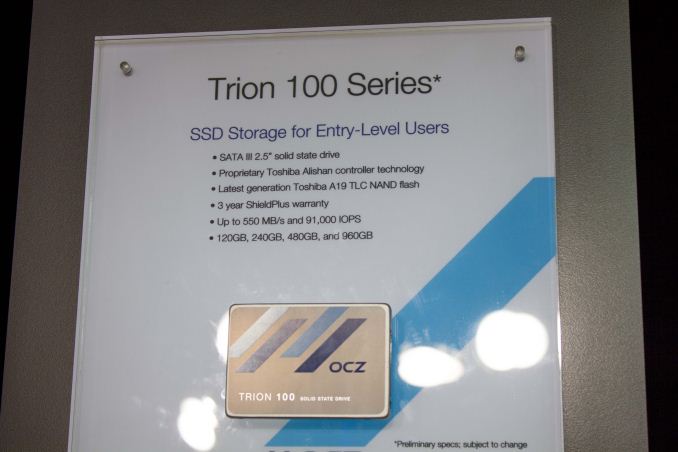
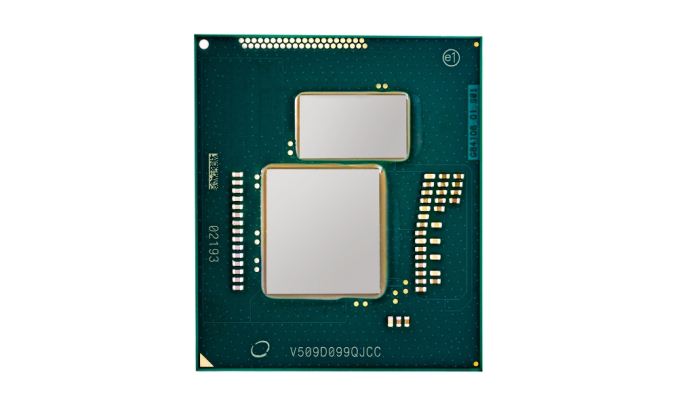
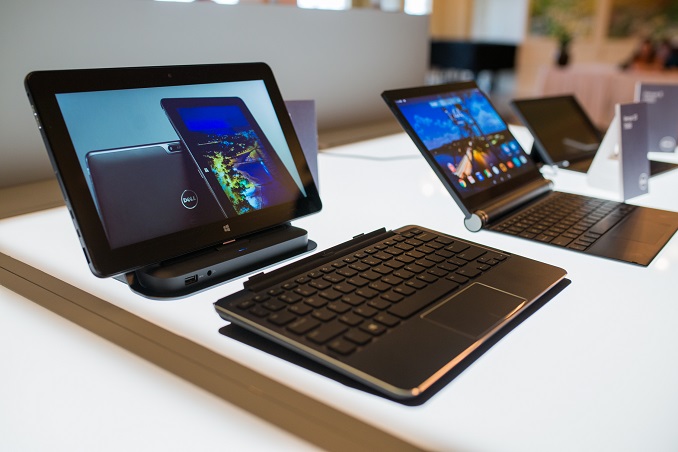



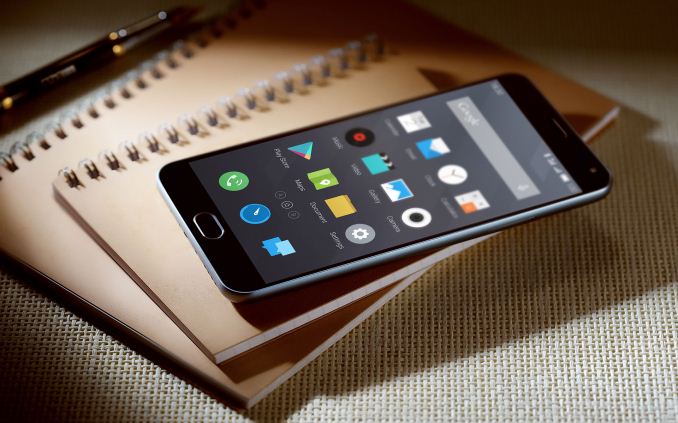


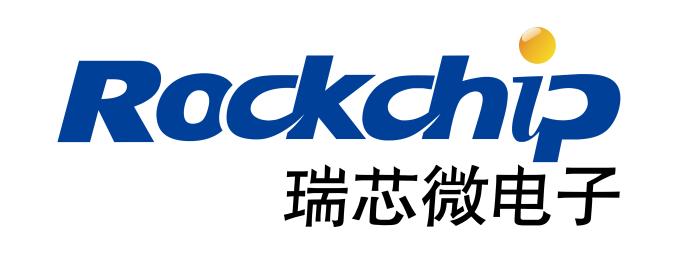


















Bookmarks